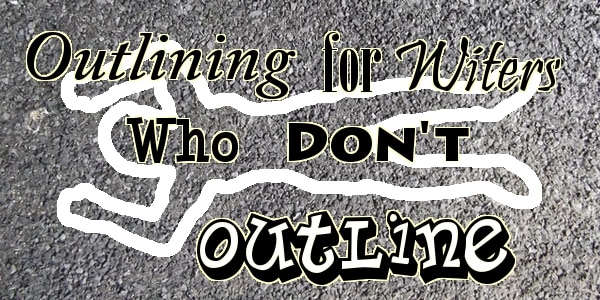
You’re a pantser, a gardener, whatever you want to call it. You don’t want to spend days/weeks/months spinning your wheels planning out your novel in excruciating detail before you even write the first sentence.
I get that. I’m like that.
The problem is that without some sort of guideline, you’re prone to wander, to babble, to leave yourself a huge, festering heap of useless scenes, characters, and minor plots that didn’t end up doing what you wanted them to. You’re piling up work to do later when you edit. It’s gratifying in that you can get the writing out sooner, but you don’t end up with a finished work any earlier. In fact, you’re probably making it take longer.
So, since I hate overly constraining myself when it comes to outlining, I came up with a bare bones method to put together a functional outline.
Step 1: Beginning and End
If you’ve got a story in your head, you should know how it starts. You should also pay attention to how it ends. Knowing your end when you begin lets you plan ahead to set up a story that will be satisfying and complete. Without that knowledge, you’re likely to tell a story that just peters out. If you’re not willing to commit to and ending, just go back to pantsing, since none of the rest of this method will do you any good.
You don’t need to know every detail. What you want to concentrate on are the state of the plot and the key characters.
Example start: MC (main character) is a poor farm boy. News of war is on everyone’s mind.
Example ending: MC is celebrated war hero.
Step 2: Climax
First, a slight detour. Let’s figure out how many chapters there will be. If you write a lot, you may have an idea of your average chapter length. If you have a concept of how long the whole novel should be, it’s simple math to figure out how many chapters that will be. If not, just pick a likely number. It can get adjusted along the way. Start by putting your beginning and end at the beginning and end respectively.
Now, back to our promised climax. Pick a spot near the end and insert your climax. Hopefully, this is a scene/chapter you’ve had in mind since before you decided to write this particular work. For me, that climactic scene is what gets me to write something. It doesn’t have to be right at the end, but it should be close.
Example climax: MC kills Dark Overlord with MacGuffin of Overlord-Slaying (it’s your outline, you can write utter nonsense here, as long as it makes sense to you).
If you have more than one scene you consider crucial, go ahead and guess a spot for it. It just leads into…
Step 3: Fill in the Rest
So you’ve got three chapters out of however many you picked. It’s time to fill in the rest. If you have scenes that have been floating around in your head, this is the time to throw them into your outline. This is also where the work comes in. You need to take all those empty spaces and start using them to connect the chapters you’ve already put down. Try to determine what needs to occur to bridge one chapter to the next from the ones you already have down. As you do this, you may realize that the order of events needs to change, that some gaps you left were too large or too small. Your overall number of chapters may increase or decrease. Just make sure that by the end…
- …everything you want to happen in the story has been placed somewhere.
- …you have logically connected your plot from beginning to end.
- …you’re happy with how the story flows.
You can use this skeletal outline to see how your pacing and development looks. “Is it really halfway through the story before the hero realizes who the villain is?” “I have eight chapters with traveling…bo-ring!” “All my action is bunched into three chapters in the middle.” Go ahead and rearrange things. Now’s the time.
Optional Step(s)
Detail. It’s an outline. It can be as detailed or sparse as you like. Below each chapter, you can add in events, scenes, realizations/discoveries, changes in characterization, and anything else you want to remember when you write it. It doesn’t have to be cogent, consistent, or pretty. An outline is just a guideline for you to use when writing your story. It can even change along the way, giving you an easier view to modify the skeleton of the story without doing it in the middle of a 70k+ word document.

0 Comments